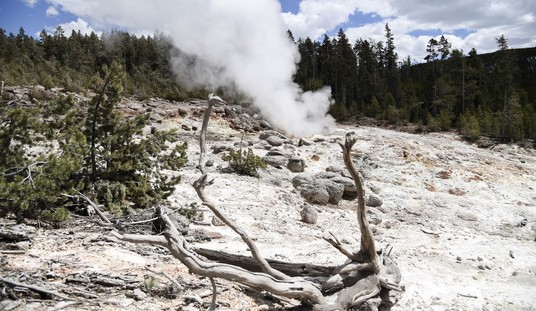
The technology had been heralded as the quickest solution to help the coal industry weather tougher federal limits on greenhouse gas emissions. But Congressional inaction on climate change diminished the incentives that had spurred A.E.P. to take the leap.
Company officials, who plan an announcement on Thursday, said they were dropping the larger, $668 million project because they did not believe state regulators would let the company recover its costs by charging customers, thus leaving it no compelling regulatory or business reason to continue the program.
The federal Department of Energy had pledged to cover half the cost, but A.E.P. said it was unwilling to spend the remainder in a political climate that had changed strikingly since it began the project.
As is the case with most green technologies, this one is a non-starter without a massive infusion of government money and mandates for its use. When those are no longer forthcoming, there is no compelling reason to do it. That’s several hundred “green” jobs down the drain.
But the issue that interests me, from the standpoint of earth science, is how one could be in favor of underground carbon sequestration while being opposed to hydraulic fracturing of natural gas wells. Scientific consistency is less important to politicians pushing a green agenda than their politics.
From a 2009 look at the project:
The technology is certain to devour a substantial amount of the plant’s energy output — optimists say 15 percent, and skeptics, 30 percent. Some energy experts argue that it could prove even more expensive than solar or nuclear power.
And as with any new technology, even the engineers are unsure how well it will work: will all of the carbon dioxide stay put?
Environmentalists who oppose coal mining and coal energy of any kind worry that sequestration could simply trade one problem, global warming, for another one, the pollution of water supplies. Should the carbon dioxide mix with water underground and form carbonic acid, they say, it could leach poisonous materials from rock deep underground that could then seep out.
Given the depths to which workers have drilled, they also fret that the project could cause earthquakes, although experts at the Environmental Protection Agency discount the risk of catastrophe.
[Emphasis added.]
Remember, the CO2 must remain in place beyond the “millenia” the Times article suggests; it must stay in place forever.
By contrast, the hydraulic fracturing (“fracking”) process that the Times always refers to as “controversial” has been employed in over a million wells in the U.S. alone without any proven connection between the process and groundwater contamination. It involves pumping large amounts of water and sand, along with a small concentration of chemicals, to induce fractures in oil and gas saturated rock layers. Fracturing enhances the rocks’ natural permeability to fluids: it increases the rate fluids can flow out of the rocks.
But this is the key point: the fracking process takes place in a day, or a matter of days, during the “completion” process of a well. It is not an ongoing process lasting months or years.
The combustion of coal produces 50% more CO2 than natural gas. On that quality alone, you’d think the greenies would be high behind gas as America’s clean, abundant, domestic fuel of the future.
Cross-posted at stevemaley.com.













Join the conversation as a VIP Member